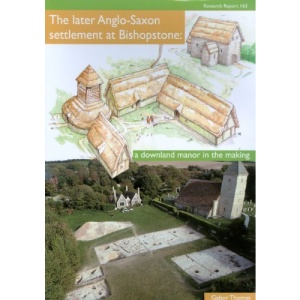If you are signed up to Facebook you can keep up with news and events to do with the excavations if you ‘like’ our page: http://www.facebook.com/Lymingearchaeology
All the big things will of course be posted on the blog too!
Gabor has mentioned many other sites in his site tours and talks, and I have also referred to a number of sites in the blog. For those interested in following up these sites, I have added a very short list of references and websites here. Click on any highlighted names or phrases to go to the relevant website. This list is by no means exhaustive and will be added to over time!
You can go to our main web page to download our own interim reports from previous seasons at Lyminge: www.lymingearchaeology.org
Yeavering, Northumberland
Yeavering is a major Saxon palace site in Northumberland, referred to in Bede’s Ecclesiastical History of the English People.
Hope-Taylor, B. 1977. Yeavering : an Anglo-British centre of early Northumbria. London: H.M.S.O
Cowdery’s Down, Hampshire
Cowdery’s Down, the best parallel for double plank construction of a hall, is published as an interim report which is available at good libraries:
Millet, M. 1980. Excavations at Cowdery’s Down, Basingstoke: Interim report. Planning dept, Basingstoke and Dean Borough Council
Bishopstone, Sussex
 Bishopstone is a later Saxon settlement site which was excavated by Dr Gabor Thomas and his team from 2002 to 2005 and has been recently published:
Bishopstone is a later Saxon settlement site which was excavated by Dr Gabor Thomas and his team from 2002 to 2005 and has been recently published:
Thomas, G. 2010. The later Anglo-Saxon settlement at Bishopstone: a downland manor in the making. York: Council for British Archaeology (Research Report 163)
The Prittlewell Prince, Essex
We found a lovely piece of thick blue glass with a lattice design, which I blogged about when it came up. The Museum of London Archaeology excavation of the Prittlewell Prince burial in Essex had two complete examples of the kind of glass squat jars that our piece was from.
Sutton Hoo, Suffolk
Sutton Hoo is one of the most famous and spectacular of Saxon cemetery sites, and is potentially of a similar date to the hall at Lyminge. Although we do not have the kind of artefacts found at Sutton Hoo as we are dealing with a settlement site, it is a wonderful example of the technology and craftsmanship that was available to the Kings of Saxon kingdoms in the 7th century. The Sutton Hoo Society website gives a good overview of the various campaigns of excavation since 1939, and the British Museum holds the grave assemblages for the nation.

